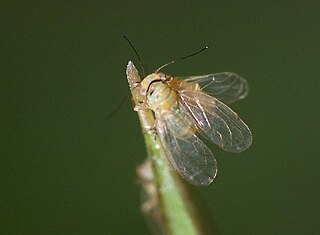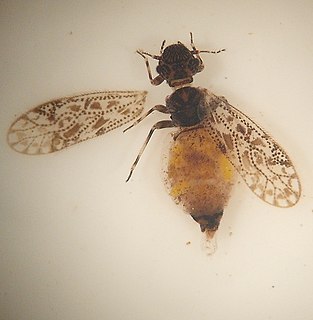
The clouded leopard is a wild cat inhabiting dense forests from the foothills of the Himalayas through mainland Southeast Asia into southern China. The first clouded leopard known to science was brought to London from China in the early 19th century and described in 1821. It has large dusky-grey blotches and irregular spots and stripes forming a clouded pattern. Its head-and-body length ranges from 68.6 to 108 cm with a 61 to 91 cm long tail. It uses its tail for balancing when moving in trees and is able to climb down vertical tree trunks head first. It rests in trees during the day and hunts by night on the forest floor.

Neofelis is a genus comprising two extant cat species in Southeast Asia: the clouded leopard of mainland Asia, and the Sunda clouded leopard of Sumatra and Borneo.

The great grey owl or great gray owl is a very large owl, documented as the world's largest species of owl by length. It is distributed across the Northern Hemisphere, and it is the only species in the genus Strix found in both Eastern and Western Hemispheres. In some areas it is also called Phantom of the North, cinereous owl, spectral owl, Lapland owl, spruce owl, bearded owl, and sooty owl.

The Formosan clouded leopard was a clouded leopard population that was endemic to Taiwan. Camera trapping studies carried out in several protected areas in Taiwan between 1997 and 2012 did not record any clouded leopard. The population is listed as extinct on the IUCN Red List.

The mottled eel, also known as the African mottled eel, the Indian longfin eel, the Indian mottled eel, the long-finned eel or the river eel, is a demersal, catadromous eel in the family Anguillidae. It was described by John McClelland in 1844. It is a tropical, freshwater eel which is known from East Africa, Bangladesh, Andaman Islands, Mozambique, Malawi, Sri Lanka, Sumatra, and Indonesia and recently from Madagascar. The eels spend most of their lives in freshwater at a depth range of 3–10 metres, but migrate to the Indian Ocean to breed. Males can reach a maximum total length of 121 centimetres and a maximum weight of 7,000 grams. The eels feed primarily off of benthic crustaceans, mollusks, finfish and worms.

The clouded angelshark is an angelshark of the family Squatinidae found in the northwest Pacific from the southeastern Sea of Japan to Taiwan between latitudes 47° N and 22° N. Its length is up to 1.63 m.
Macalla nebulosa is a species of snout moth in the genus Macalla. It was described by Schaus in 1912. It is found in Costa Rica.
The mottled eel, also known as the African mottled eel, the Indian longfin eel, the Indian mottled eel, the long-finned eel or the river eel, is a demersal, catadromous eel in the family Anguillidae. It was described by John McClelland in 1844. It is a tropical, freshwater eel which is known from East Africa, Bangladesh, Andaman Islands, Mozambique, Malawi, Sri Lanka, Sumatra, and Indonesia and recently from Madagascar. The eels spend most of their lives in freshwater at a depth range of 3–10 metres, but migrate to the Indian Ocean to breed. Males can reach a maximum total length of 121 centimetres and a maximum weight of 7,000 grams. The eels feed primarily off of benthic crustaceans, mollusks, finfish and worms.
Leptophlebia nebulosa is a species of pronggilled mayfly in the family Leptophlebiidae. It is found in North America.

Taeniopteryx is a genus of winter stoneflies in the family Taeniopterygidae. There are more than 20 described species in Taeniopteryx.
Periscelis is a genus of flies in the family Periscelididae. There are about 15 described species in Periscelis.
Panorpa nebulosa is a species of common scorpionfly in the family Panorpidae. It is found in North America.
Anambodera nebulosa is a species of metallic wood-boring beetle in the family Buprestidae. It is found in North America.

Heteropsylla is a genus of plant-parasitic hemipterans in the family Psyllidae. There are more than 40 described species in Heteropsylla.

Aaroniella is a genus of loving barklice in the family Philotarsidae. There are more than 40 described species in Aaroniella.
Graphops nebulosa is a species of leaf beetle. It is found in North America.
Catharosia nebulosa is a species of bristle fly in the family Tachinidae. It is found in North America.
Allohelea is a genus of predaceous midges in the family Ceratopogonidae. There are more than 30 described species in Allohelea.
Apenes nebulosa is a species of ground beetle in the family Carabidae. It is found in Central America and North America.
Eucalyptus nebulosa, commonly known as the serpentine peppermint, is a species of small tree that is endemic to the northwest of Tasmania. It has smooth, creamy white bark, narrow elliptic adult leaves, flower buds usually arranged in groups of between seven and eleven, pale creamy white flowers and hemispherical or more or less top-shaped fruit.








